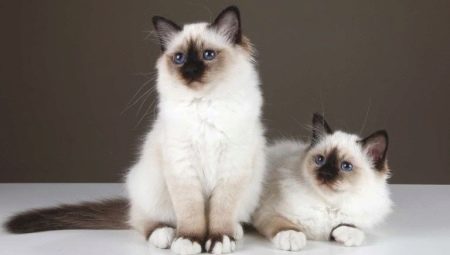Burmese cat is known for its loving and affectionate character. She gets along well with young children because of her playful and gentle nature. These beautiful, blue-eyed creatures are recognized as extremely human-centered. They are often called "human cats" because they quickly find mutual understanding with people. Such cats love to communicate with their owners, especially when they are stroked by a beautiful, fluffy and shiny coat.

Origin
Burmese cats, once considered holy, are truly a royal breed. Burmese sacred cat is known primarily from legends. According to legend, in the monastery of Burma, these cats always accompanied the monks. The animals had white fur and yellow eyes.
The high priest Moon Ha had a cat named Sinh. When enemies attacked the temple, he was killed along with many other monks. The distraught cat jumped onto the body of his master and suddenly changed his fur to a darker one. And the eyes from yellow turned to blue, and became like the eyes of the goddess who was worshiped in the temple. The next day, all the cats looked like Singh. It was believed that the goddess helped the monks repel the attack and save the temple.
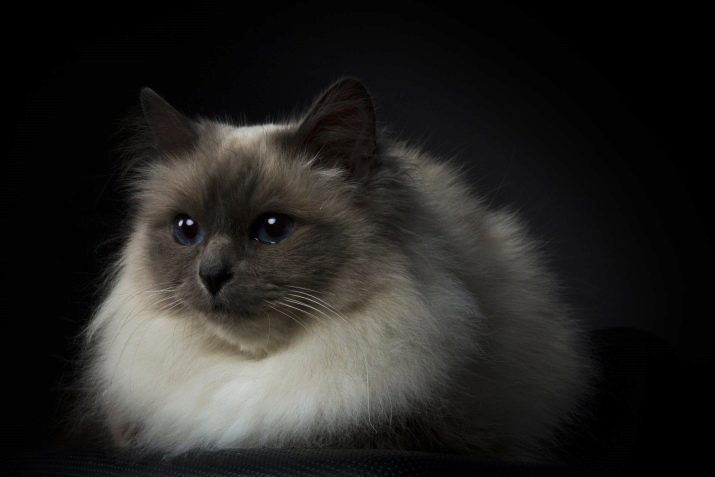
This is what the legend says. However, the reason for keeping cats in the temple was a bit more prosaic. Their task was to control rodents.
Although this legend is somewhat related to documented history, the main purpose of its proclamation was to exalt this breed of cats, for their subsequent sale.
The first European pair of Burmese cats actually came from Burma. They were sent in 1919 by ship to France.The breed was recognized in France in 1925, where a cat of this breed was first shown at the exhibition. In the 1950s, the name “Burmese cat” was changed to “holy cat from Burma”.
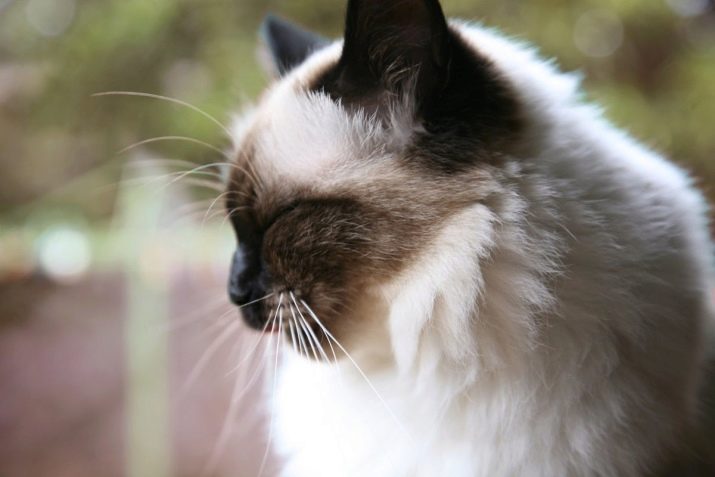
Description
The Burmese cat is an animal of medium size, weighing 3-6 kg (males are larger than females). The head has the shape of a triangle, and the forehead is slightly convex. The eyes are large, round, blue. The nose is medium sized, slightly concave. Ears are not set too low, rather small and covered with tufts of wool. The tail is medium length. Cats are stocky, somewhat elongated, muscular and strong. Wool with a small amount of undercoat, semi-long and silky, pleasant to the touch. Let's consider some other characteristics.
- Color. There may be multi-colored markings on the head (part of the muzzle, ears), limbs and tail. The rest of the body is the color of the eggshell. White “gloves” on the front legs and “spurs” on the hind limbs are characteristic - always symmetrical.
- Activity balanced, a cross between a British cat and a sphinx.
- Life span - from 15 to 18 years.
- There are short-haired and long-haired species Burmese cats.
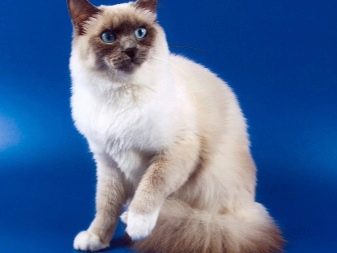
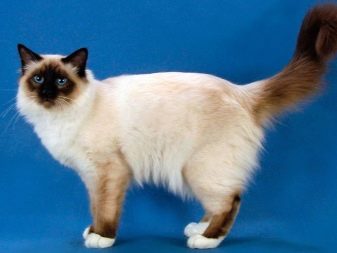
Breeding of the Burmese breed was stopped by the Second World War, but in 1955 brought an increase in the number of Burmese cats. In the United States and Europe, cats with classic coat color were mostly bred. New color options were introduced in England. Cats had chocolate pink and lilac shades. Later years brought additional color combinations such as cream and red.

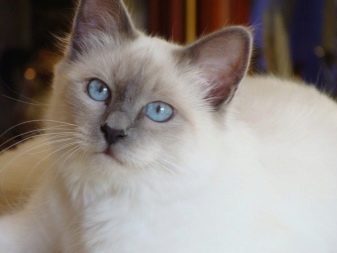
Burmese cat is a rather rare breed. Therefore, obtaining an ideal cat of this species with symmetrical visual features, such as “gloves” and “spurs,” is quite problematic. Due to the characteristic coloration, which is subject to the greatest restriction of breed standards, breeding a Burmese cat is not an easy task.
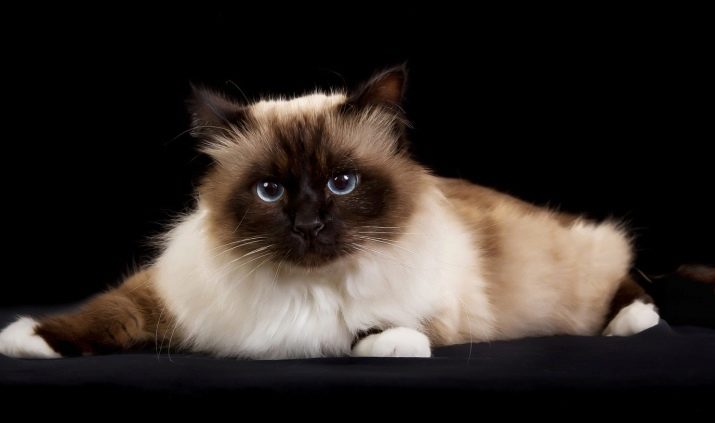
Females are very good mothers and on average give birth to 2-4 kittens. Kittens are born completely white, and their true color can appear only after two days, and sometimes even after two weeks.
The initial training of these animals is uncomplicated, because this four-legged friend is distinguished by a calm and friendly character and an exceptional mind. The cat feels very well surrounded by many people and animals, but most of all she likes representatives of her own breed. This makes breeding much easier.
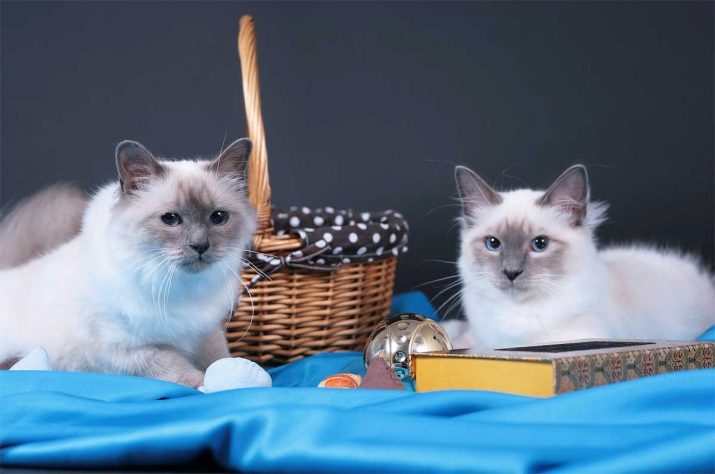
The modern Burmese cat was formed in the framework of breeding programs with the participation of Siamese and Persian species, as well as European shorthair representatives of the cat family. Over time, it became clear that most European lines are firmly intertwined with each other, which affected the general appearance of cats.
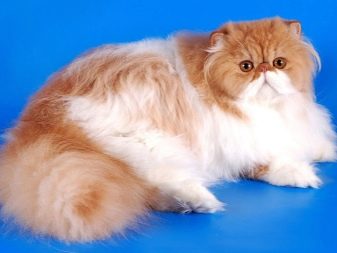
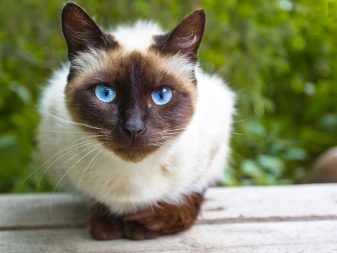
Character Features
Although each kitten has its own temperament, one can observe many common features characteristic of all representatives of the breed. Sociability and attachment to the owner are in harmony with self-control and restraint towards strangers. These cats are not too active, but not very lazy. They may require feline caresses when they are ignored for too long. But they do it tactfully - in a soft, melodic and pleasant voice for the human ear.
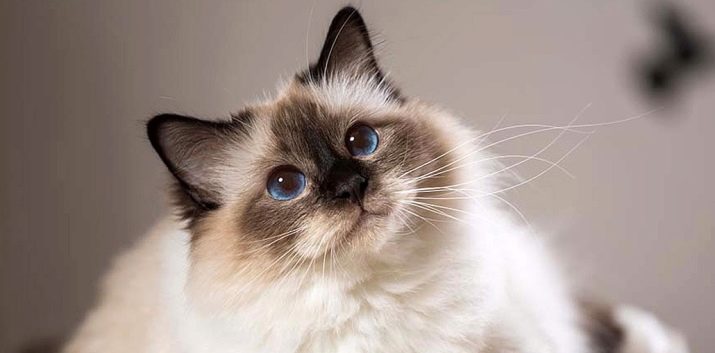
They also use this voice to tell the owner everything they consider important.
Kittens learn quickly and show great creativity in finding new games. Reason and curiosity for the world, as well as loneliness and boredom, lead them to willingly accept the company of other animals. But preferably representatives of their own species, with the same gentle and conflict-free nature. They love family life, they can live with all family members and willingly participate in their daily activities.
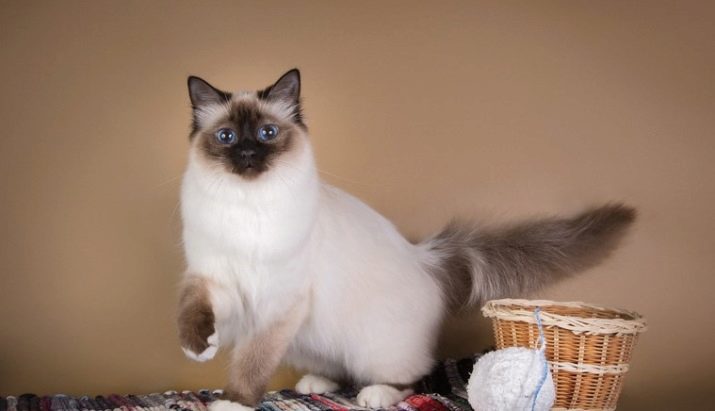
In the family of Burmese cats, one can observe a tendency to create “gatherings” when cats sit in a circle and silently look at each other for several seconds or minutes, as if thinking. None of the representatives of other "races" are invited to such a meeting.
The nature of the Burmese cat is manifested, first of all, in great kindness to people and a very friendly disposition. These cats are smart and sociable, will not be overly intrusive. They quickly and for a long time become attached to people, but choose one, special member of the family. Burmese cats definitely need people, because they don’t tolerate loneliness.
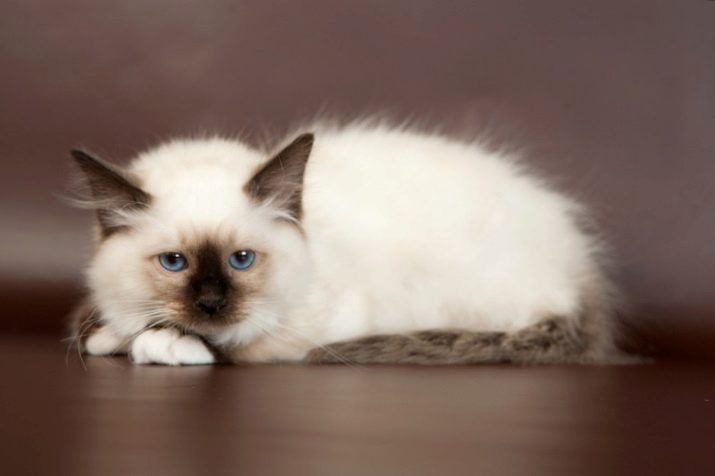
They feel even better among a large group of people, so they are ideal for families with several children. In addition, they patiently endure carrying on hands and all the caresses that their babies generously reward. At the same time, the child should be explained that a cat is not a toy, but a living creature that also needs its place. With the right behavior, a cat and a child can become best friends.

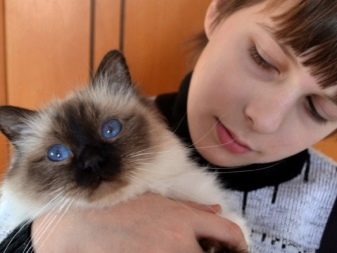
The character of the Burmese cat can be described as a mixture of a calm Persian with the vivacity of a Siamese representative - it is rather a quiet cat with a melodious voice, but very curious and requiring entertainment.
You must provide him with many shelters, places for sharpening claws and observation posts. For this pet, it is as important as time spent with a person and a large number of caresses.
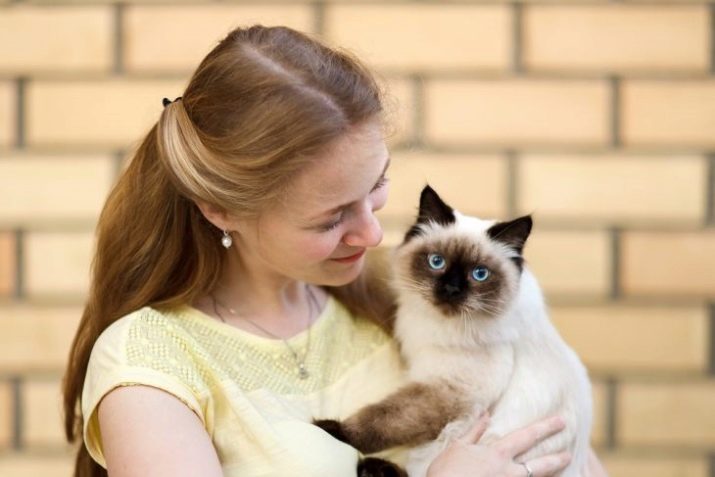
These cats are really domesticated and feel good even in a small apartment.
Sacred Burmese cats are distinguished by affection for humans. They are ready to create a deep relationship with their guardian. Both in the game and in the food, these cats retain great delicacy and impeccable grace. It seems that they know about their mystical descent from their ancestors. The Burmese cat is extremely polite and calm, but it should not only be a home mascot, but primarily a member of the family. He is involved in your life. And whenever you need it, he is next to you.
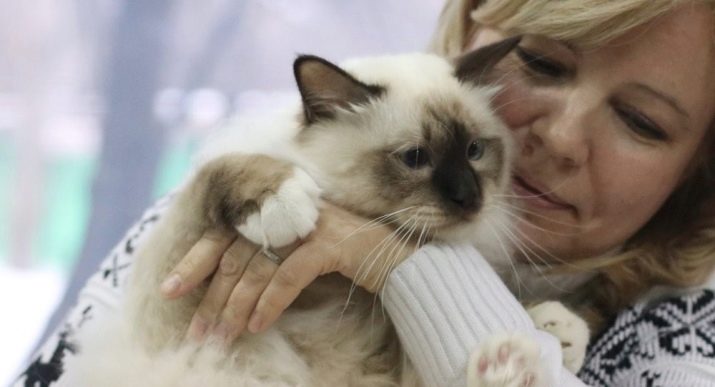
Birman matures earlier than most long-haired cats. The males of this breed are famous for their temperament, and the females are wonderful mothers. Holy Burmese cats are distinguished by activity and physical health. It is quite stress resistant. They have a strong character.
Some experts say that Burma is an absolutely quiet cat. In fact, the Burmese is a talker, and his every need, dissatisfaction, joy, or even going to the toilet is commented on by a wide range of sounds - from gentle grunts to loud purrs or persistent meows.
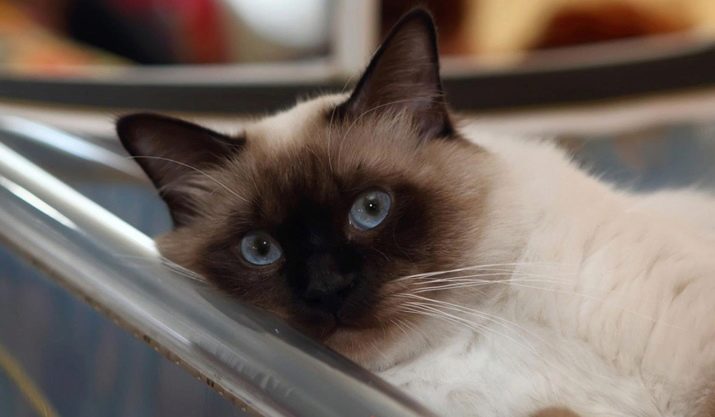
Types of colors
The Burmese breed owes its appearance to the crossing of Siamese and Persian cats, which began in France in the 1920s, so it is not surprising that their character and appearance are different from other cats.
Burmese coloring refers to the most stringent, but not the only breed standards. After all, not every cat with white legs and long fur is Burmese. The tail of cats of this breed is very lush and fluffy. Their sapphire blue, round eyes are especially noteworthy. The fur is semi-long and silky to the touch. However, unlike the Persians, they have little undercoat.
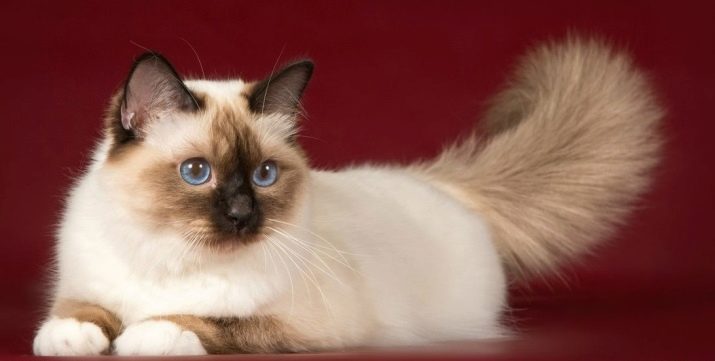
The semi-long fur is mostly white. Dark color appears only on the face, ears, paws and tail. This designation is called the “dot”. Due to genetic conditions, any possible coloration may appear as a “spot color”. The most common colors of these animals may still include black, red and their shades.
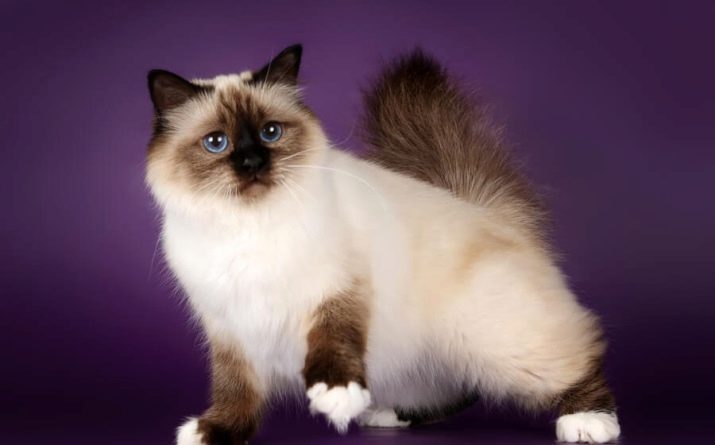
The rainbow palette of color varieties of this breed will undoubtedly satisfy even the most demanding people. If initially the holy Burmese cat was mostly white, now we can choose from twenty-two officially recognized species (and several experimental novelties).Of course, all kittens are born in light color, but after a few days of life begin to change. First, the ears, nose and tail darken. Then the color change gradually spreads to the upper parts of the paws and to the muzzle, creating a certain mask.
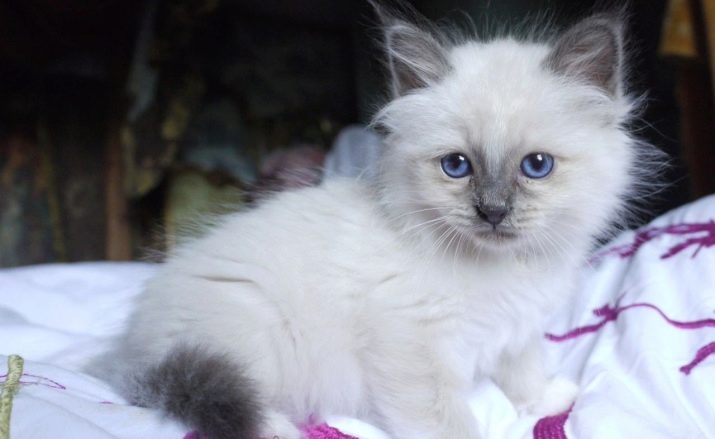
The color change process ends in the third year of the animal's life.
Basic color options:
- beige or cream color with chocolate stains;
- ivory color with dark spots;
- bluish wool with white shimmer and blue markings;
- white background with spots of lilac color.
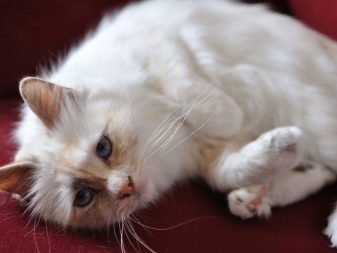
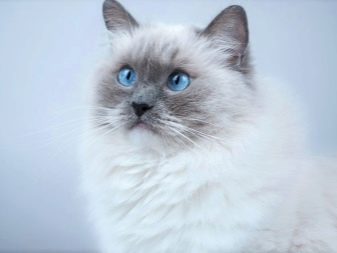
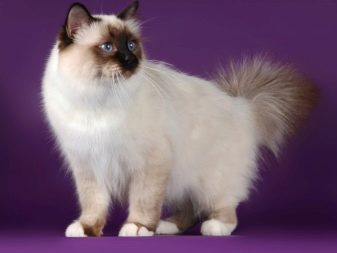
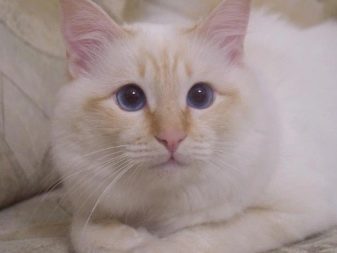
In addition, kittens may also have the color of a tortoise shell. Especially interesting are the tones of gray-blue, coupled with apricot, a combination of gray and lilac, chocolate and a light red.
Scientists have investigated the cause of discoloration of fur in Burmese cats. A mutation is responsible for this, which leads to a weakening of the function of tyrosinase, an enzyme involved in the production of melanin, which causes partial albinism. Snow-white paws (the so-called spurs), characteristic of this breed, were also explained in 2009 by genetic changes.
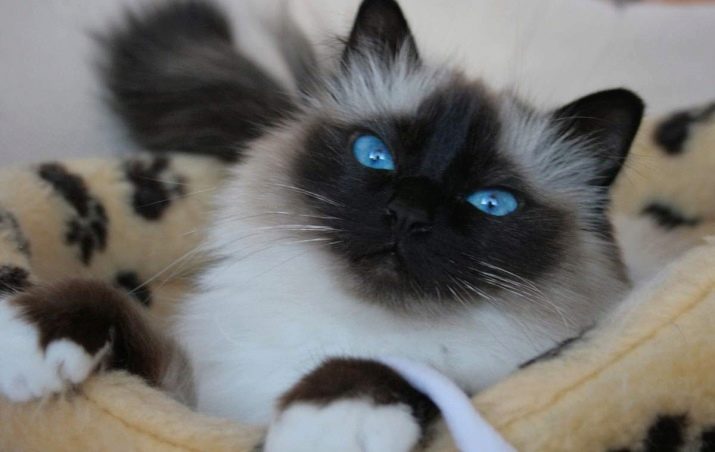
How to choose?
Before proceeding with the selection of a kitten, you should determine its gender. Burmese cats are quite playful, affectionate, creative and fluffy. Minus - they are very loud when they want to mate, and mark the territory with secretions with a specific smell. If you do not plan to breed cats, then castration will be the best exit.
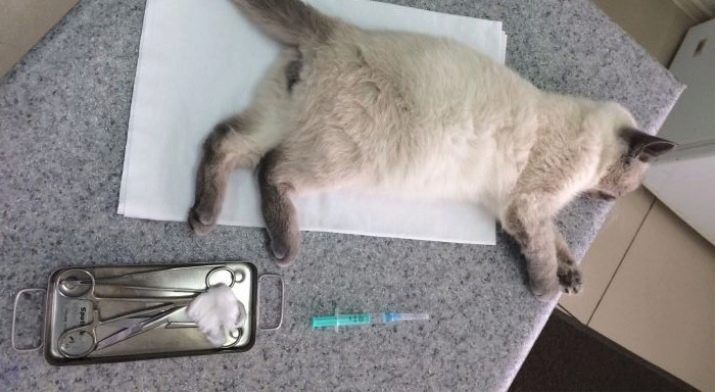
Cats are more independent and wise, moderately playful. The downside is the inadequacy of behavior during the estrus period. If a female is not mated for several years with a cat, her health may appear. Many problems can also be avoided by sterilization.
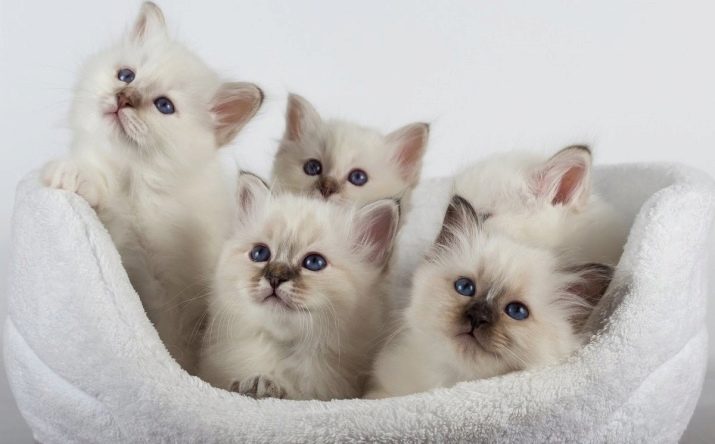
Prices for kittens of this breed range from 10 to 50 thousand rubles. It happens that kittens are sold much cheaper. Of course, documents and guarantees are not provided in this case. And here you can fall into the hands of a fraudster who can give out a furry baby, having a Siamese color, for an expensive sacred Burmese. Do not be fooled by the advertisement “Burmese cats without pedigree, giveaway”.
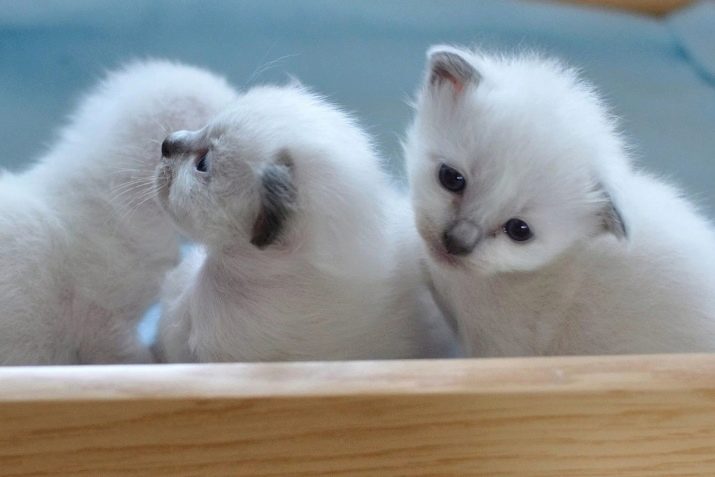
Very often you can only slip an individual similar to a Burmese. Therefore, consider the signs of the true breed of the sacred Burmese cat described above.
You should also consider time limits. Burmese is relatively easy to maintain, but it's important to spend time with him regularly. This is good for the well-being of the animal and perfectly strengthens your connection. The cat will also need stimulation while you are not at home. You might consider taking two cats if they spend a lot of time without you. Thanks to this, kittens will be mentally and physically active, together they will have fun, climb, cuddle and the like.
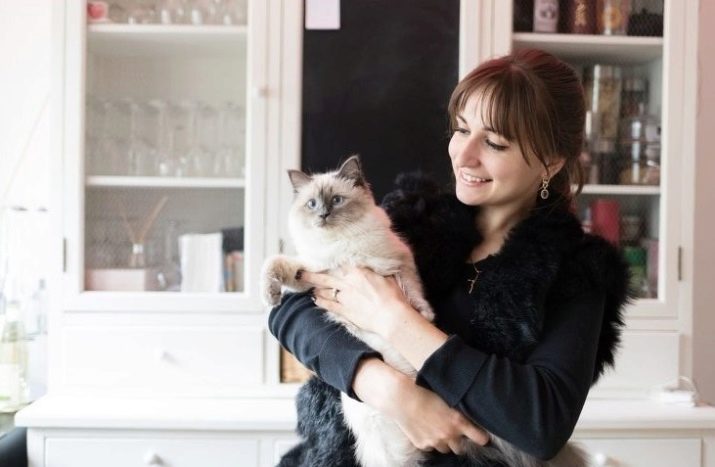
Also, keep in mind that it is better to take cats from professional breeders who, working with registered nurseries, guarantee the thoroughbred origin of their cats. Animals from reputable breeders are tested for genetic diseases. Professionals will be happy to discuss your choice and help you decide which breed will be the most suitable. You can visit and see cats before taking them home.
If you are unable to buy a cat from a certified cattery, then carefully inspect the animal before purchasing. A healthy Burmese kitten should be active, playful, with clear eyes, clean ears and shiny thick coat. If discharge from the eyes or ears is detected, discard this specimen. It is also necessary to ask the owner about the availability of a veterinary passport and vaccinations. Specify what the baby was eating so that there are no stomach problems at home.

How to name?
When looking for a name for a new family member, we consider a variety of criteria. Some analyze the external characteristics of the animal. Others draw inspiration from their favorite films and books.Still others choose a name by chance. But few people think about the preferences of the cat itself.
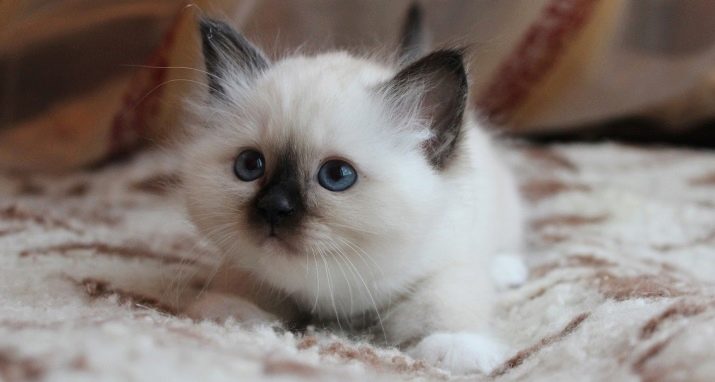
According to experts, not a good name sounds equally pleasant for every cat. Some words sound much better in cat ears than others. According to this theory, if we want our animal to respond to a team without any problems, we must consider several important factors when choosing.
What seems beautiful and original to us does not necessarily work in everyday life. If your cat, despite repeated repetitions, seems “deaf” at the sound of his name, this does not always mean that she intentionally ignores you. It is possible that this word does not sound clear enough in her ears to make her react.
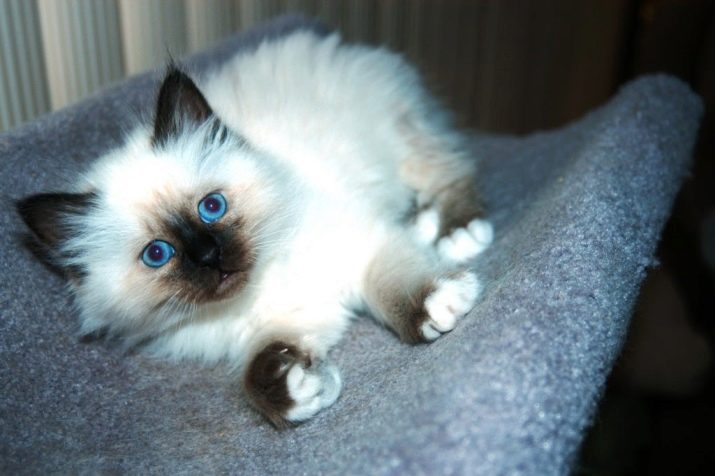
Cat ears focus on capturing high sounds. They hear them much better than low tones, because most of the cat's victims are birds and rodents. And the latter communicate at high frequencies, which we humans often do not hear. This means that a name that ends in a low tone (for example, Lancelot) will be perceived by the cat much less than a sound containing higher frequencies (for example, Pixie). And that is not all. Cat ears are also sensitive to hissing and rustling.
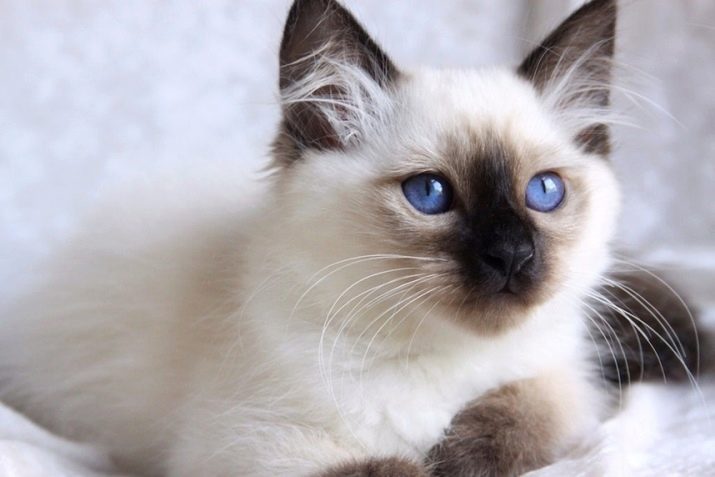
Names such as Fluff have a more vivid reaction of the animal, except, of course, situations in which the cat simply does not want to answer the call.
In addition, experts suggest that it is easier for cats to learn longer names that have 3-4 syllables. You can consider other factors that prompt successful names.
- Depending on the behavior. A tender cat can be called Laska or Murlyka, and a sleepy lover can be called Sonya.
- From the color. Depending on it, cats can be called Smoke, Snowball, Peach.
- From what profession or hobby the owner has. The programmer can call the pet Mouse or Claudia. Tennis fan - Rocket or Ball.
- By movie or cartoon characters Cats can be called the Moon, Nala, Bagheera, Matilda.
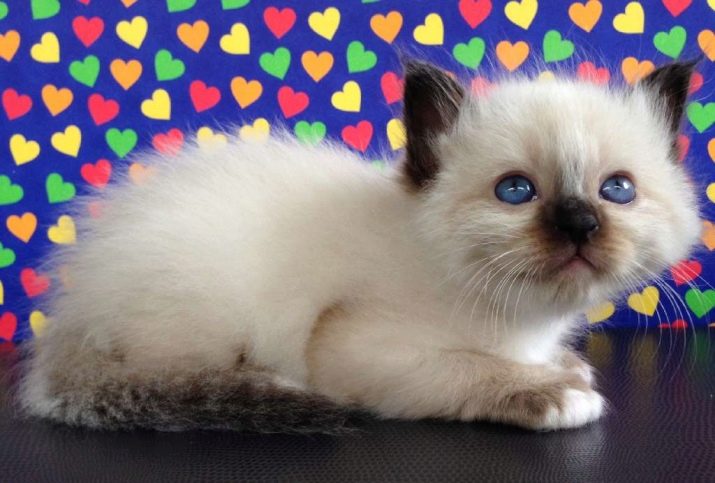
Popular names for girls:
- Musya;
- Asya;
- Bagheera;
- Burma;
- Sonya
- Busya;
- Nyusha;
- Simka
- Jesse
- Eve;
- Haze;
- Masyanya;
- Cleo
- Adele;
- Roxy;
- Athena;
- Martha;
- Alpha;
- Mayan;
- Sherry;
- Bauble;
- Linda.

Boys:
- Kuzya;
- Barsik;
- Peach;
- Alex
- Lucky
- Tikhon;
- Felix;
- Bucks;
- Zeus;
- Smoke;
- Timon
- Tom;
- Simba
- Marquis
- Simon;
- Coconut;
- Garfield
- Tyson;
- Oscar;
- Mars;
- Loki
- Casper
- Alf;
- Ice;
- Caesar;
- Semen;
- Leon;
- Marseilles;
- Kai
- Athos;
- Richard;
- Watson;
- Jackie
- Ricky.
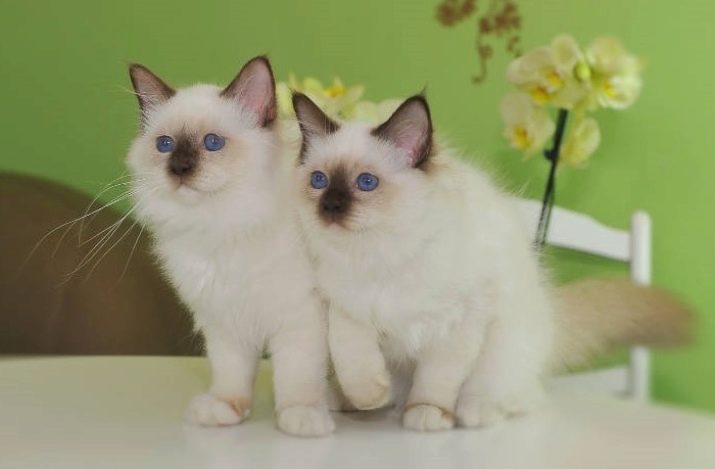
Content
The Burmese cat is a beautiful, aristocratic animal with wonderful hair and unusual eyes, which is a real rarity among cat breeds. This is a very undemanding cat in terms of care, with a gentle and peaceful character. However, it should be remembered that due to the small undercoat, low temperatures for such animals are uncomfortable - this is a typical domestic cat. Do not forget that Burmese cats suffer greatly from loneliness. They can be very upset by living alone in an empty apartment.
Therefore, it is worth thinking several times before choosing this breed.
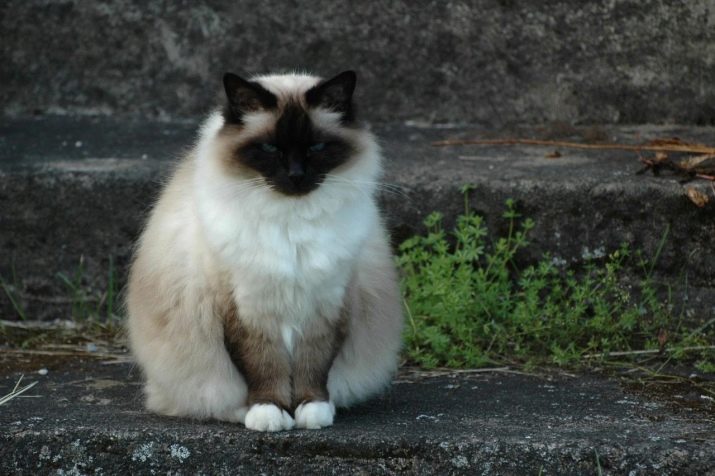
Food
In the diet of Burmese cats, the most important point is feeding wet food, although cats are not very demanding on food. It will be necessary to provide them with food with the necessary amount of nutrients in order to maintain the body in good condition. In order for cat's hair to be well-groomed, it is necessary to use vitamins that nourish the skin and, accordingly, provide healthy, beautiful and shiny fur.

Scientific studies have confirmed that cats prefer food that matches their original food — rodents. The average “victim” of a cat usually consists of 50-60% protein, 20-30% fat and 5-8% carbohydrates. Therefore, it is not surprising that meat should be in first place in the list of feed ingredients.Legislative provisions require placing the list of ingredients on packaging labels and sorting them according to the quantity in the product. Therefore, you can navigate by the label.
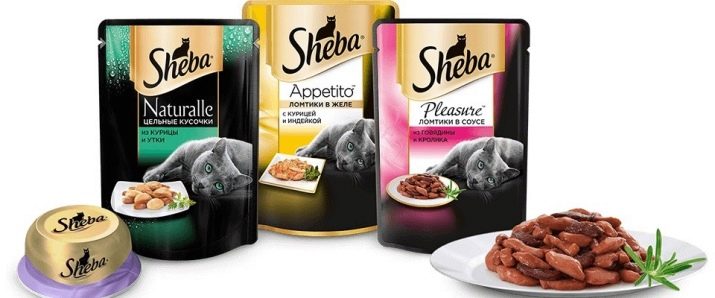
Burmese prefer delicious food. For them, food quality is more important than quantity. The priority for these cats is to get natural meat food. They are happy to consume chicken, turkey or beef. Some cats love fish. It is undesirable to give them fatty meat and food containing salt. Such foods can adversely affect the kidneys and liver.

Giving food “off the table” to a Burmese cat is contraindicated. Also in her diet should not be spicy and smoked food. You can mix natural food with quality food. Cheap feeds can damage the functioning of the gastrointestinal tract.
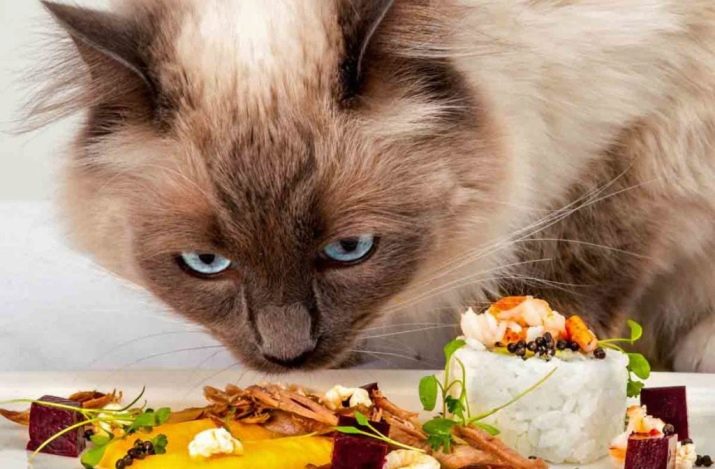
In the kittens menu, you can include a little low-fat chicken or ground beef and sour-milk products. Babies are given food 4-5 times a day. Servings - not more than 150 g. Older individuals are given food twice a day, in an amount of not more than 250 g.

In general, a Burmese cat has no special nutritional requirements. Like other cats, it should be provided with a balanced diet, adapted to the needs of the animal. It is also worth giving them drugs to facilitate digestion.
Hygiene
As for pet hygiene, here are some important nuances to consider.
- Burmese cat is undemanding and easy to care for. Sacred Burmese require regular combing so that hair does not form bunches. Swimming is also advisable. Long fur with a small amount of undercoat does not have a strong tendency to become tangled. Just clean it with a metal scraper once or twice a week. However, during intense molting, regular combing of dead hair will undoubtedly make life easier for both the cat and the owner, reducing the amount of hair left on the carpet.
- Eye or ear contamination is removed if necessary (which happens infrequently). It is very important to clean your eyes, because, like Persian cats, Burmese have short tear ducts.
- Pay more attention to oral care, especially in older cats, which usually have tartar. Special edible toothpaste works best because it does not require the use of a brush that cats don’t really like.
- Remember to cut your claws periodically.
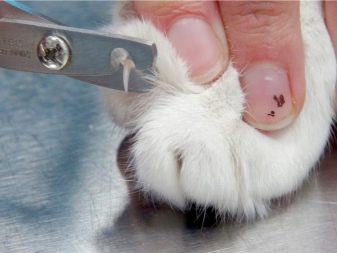
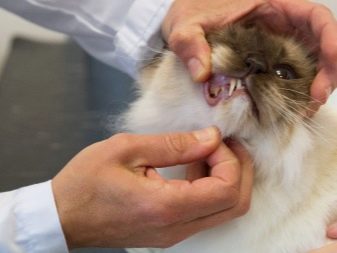
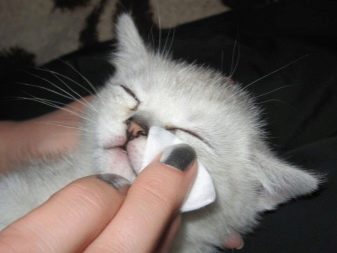

Possible diseases
The health of Burmese cats should not cause many problems. Most of them live in good health for many years. Burmese cat is considered a healthy and persistent representative of these pets. The best disease prevention is an adequate healthy diet. The basis should be a complete diet - wet meat food with a rich content of proteins, fats and carbohydrates.
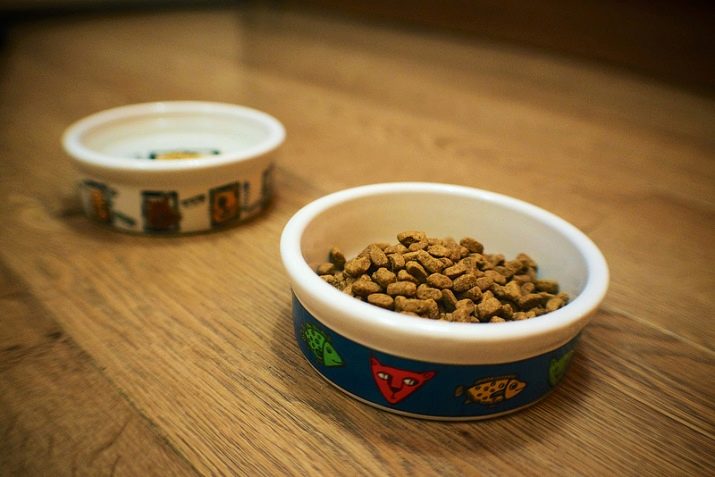
A diet adapted to the needs of the breed helps a cat to maintain good health and fitness.
Unfortunately, proper nutrition can not always prevent some diseases.
- Eye ailments. Burmese cat diseases often touch their eyes. Inflammation and strabismus are common.
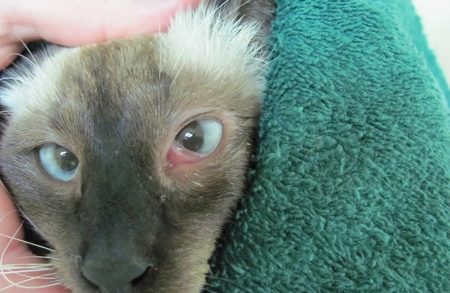
- Cyst. Another threat is cysts, which in Burmese cats are usually found in the ovaries and testicles, less commonly around the head.
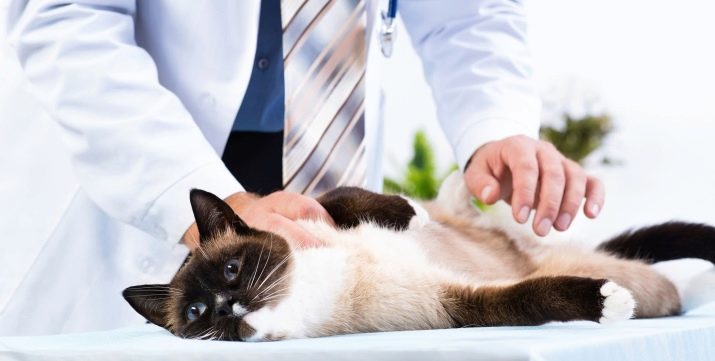
- Neurological diseases. One of them is spongy degeneration. Causes a lack of coordination, and even paralysis.
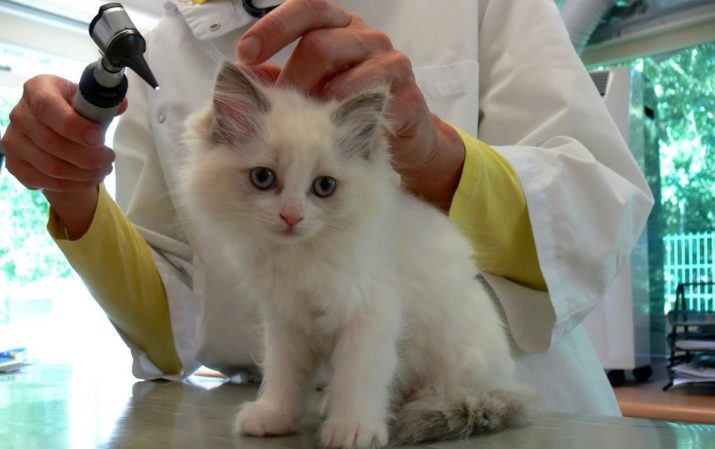
- Tumors The occurrence of a benign tumor on the cornea is a corneal dermoid. The tumor is operable.
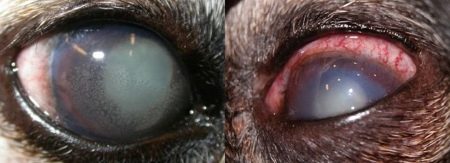
- Hypomethylation. A common disease in this breed is hypomethylation. To reduce the prevalence of this disease, it is necessary to prevent mating of sick animals. The intercellular connection is disrupted by the damaged gene, which leads to severe seizures. Symptoms of this disease in a Burmese cat may appear as early as 3 weeks of her life.These include movement disorders and temporary tremor. A disease can lead to hearing loss or a reduction in life expectancy.
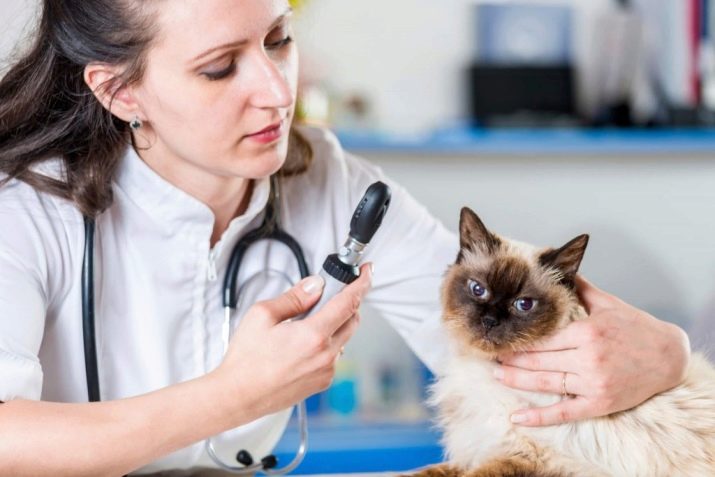
Although in some cases, these symptoms may disappear over time.
- Genetic diseases. They are the most common causes of cardiomyopathy. Studies by British scientists in 2017 showed that cardiomyopathy affects about 10% of Burmese cats. The most common is hypertrophic cardiomyopathy, which affects almost 7% of this breed.

The emergence of genetic diseases reminds us of how important breeding selection and thoughtful pairing of animals. Breeders who care about the welfare of their animals invest in additional genetic tests and are not shy about excluding sick individuals from breeding. For the future owner, this means one thing - you need to trust only professional breeders who can provide complete medical documentation for the animal and the results of any possible genetic tests.
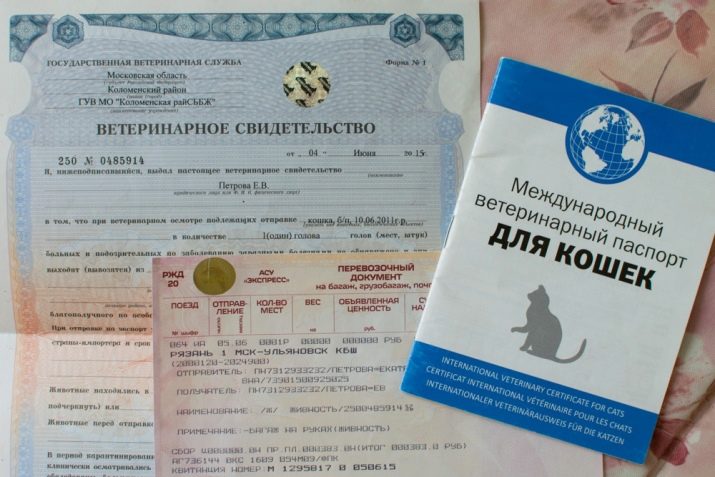
People who seek to increase breeding and profits invest in high-quality feed, the necessary research and the good keeping of their animals. They also take care of the length of time that kittens must stay with their mother. This time is extremely important for the correct development, physical and mental health of the kitten, because he studies everything that is important for a long and balanced life.
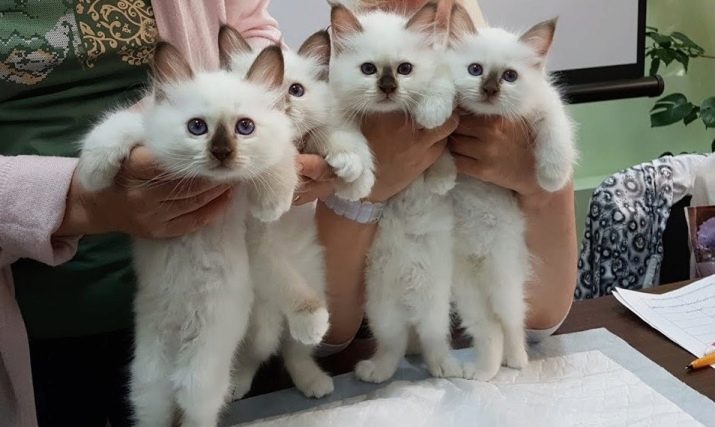
Owner reviews
Most reviews of Burmese cats are positive. Consider what owners mark on forums.
- Exotic Burmese sacred beauty with beautiful fur will be the pride of any home. In addition, she is a devoted and loyal friend.
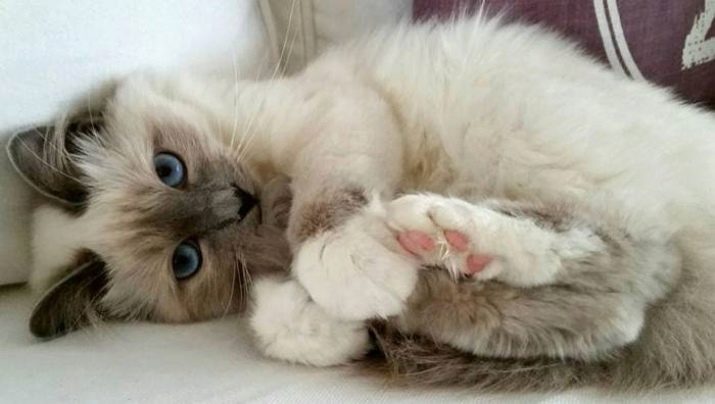
- A kitten accustomed to play with children from an early age will be friendly and kind to them. The animal likes when family members tend to surround him with tenderness and devote their time to it.

- Burmese cat, thanks to its inherent softness, will be an ideal companion for children.

- Burmese cats are very attached to their owner, and each separation is very painful for them. Keep this in mind when planning a longer trip. The animal needs constant contact with humans. Therefore, this breed is not suitable for people who spend most of the day outside the house.
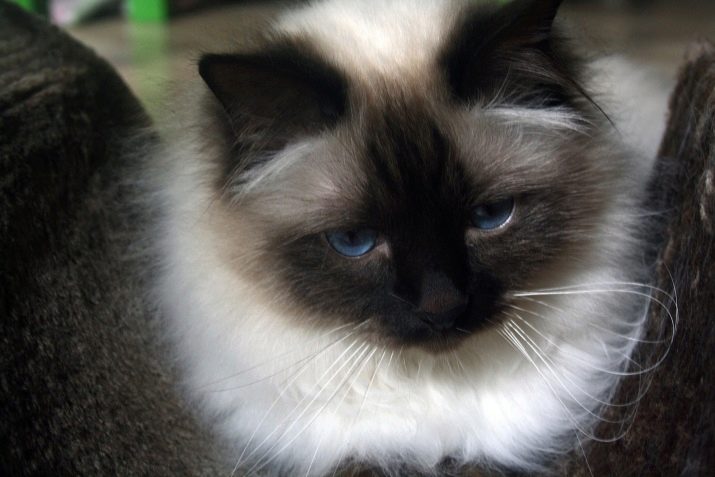
- Sometimes they are wary of strangers, but get along well with other cats.
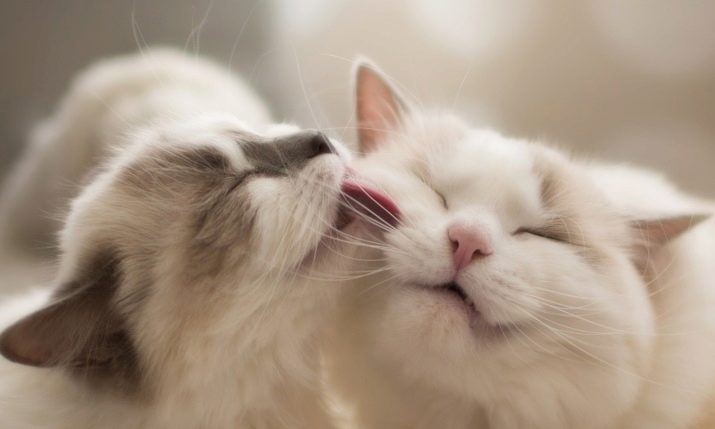
- It is worth making a choice in favor of this cat also due to the fact that it has good health. Diseases are rare, although, of course, they do. Therefore, for the acquisition of a kitten, it is advisable to choose a special nursery where purebred, tested and healthy Burmese cats are bred.
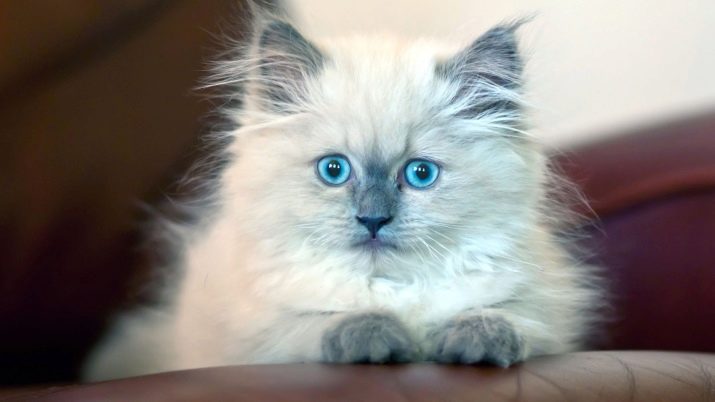
Judging by the reviews, the only drawback of these cats is the presence of a rather long coat. However, this problem is easily solved by periodic combing.
More about Burmese cats in the video below.
